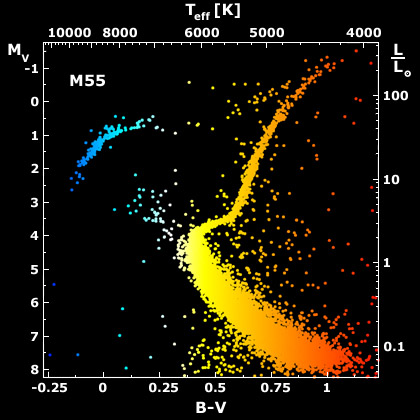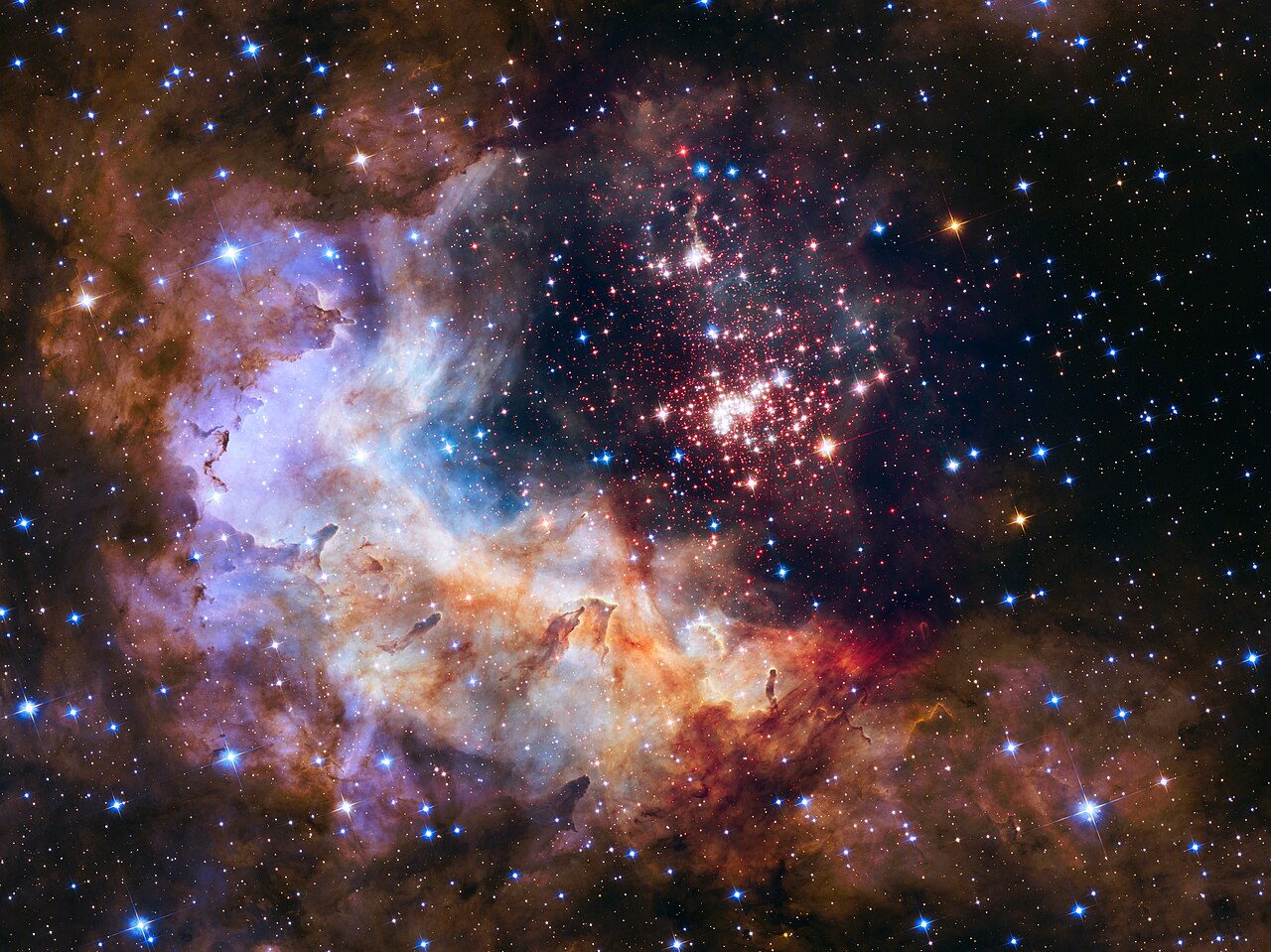johnnydeep wrote: ↑Wed May 18, 2022 8:04 pm
Ann wrote: ↑Wed May 18, 2022 5:51 pm
Fred the Cat wrote: ↑Wed May 18, 2022 4:12 pm
Give the credit to Ann. She asks interesting questions that I get a gut reaction to look for answers.

Thanks a bunch!

Galactic center stellar cluster from Near and mid infrared observations of the galactic center.png
NADEEN BASSAM IZZAT SABHA wrote:
Figure 1.5: L
-band (3.8 µm) mosaic of the Galactic Center stellar cluster obtained with VLT NaCo in
2012. Most sources are identified based on Viehmann et al. (2005). One arcsec translates to ∼0.04 pc
for an 8 kpc distance to the GC. The position of the supermassive black hole Sagittarius A* (Sgr A*) is
marked by a cross. North is up and east is to the left.
´
The galactic center is a crowded place! Indeed.
As David Bowman said in the movie
2001: A Space Odyssey:
My God, it's full of stars!
Ann
So now let's compare the density of stars in this pic with that of a globular cluster. In this pic, I'd guesstimate there are at least 10*10*10 stars in the 5x5x5 arcsec volume around the BH at the center plus mark. That would be a density of 1000 / 0.2
3 stars/pc
3, or
1 star per 0.000008 pc3
Per Wikipedia,
https://en.wikipedia.org/wiki/Stellar_density wrote:The locations within the Milky Way that have the highest stellar density are the central core and the interior of globular clusters.
A typical mass density for a globular cluster is 70 MSun pc−3, which is 500 times the mass density near the Sun.[2] In the solar neighborhood, the stellar density of a star cluster must be greater than 0.08 MSun pc
−3 in order to avoid tidal disruption[3]
That would mean the stellar density in the vicinity of the BH (excluding the BH itself!) is much higher than that at the center of GCs, namely, a density of 125000 stars per pc
3 around the BH! No? Unless I got my math screwed up...(which I admit to not being entirely confident in).
Johnny, if your math can sometimes screw up, mine is non-existent.
I get, more or less, the expression
1 star per 0.000008 pc3. If nothing else, I certainly know how to ask Google to explain exactly what it means. So, for example, how many stars would that be per cubic light-year? Google should be able to tell me.
But I don't get this:
A typical mass density for a globular cluster is 70 MSun pc−3, which is 500 times the mass density near the Sun. Yeah? This just talks about stellar
mass, not about the number of stars.
Is there a way to figure out how many stars per cubic parsec, on average, it would take to create a 70 MSun pc
−3 situation in a globular cluster?
(Or, alternatively, does anyone know how many stars there is in the cubic parsec centered on the Sun?)
We should keep a few things in mind here. First of all, stars in globular clusters are typically low in mass. With the exception of a handful of blue stragglers, my guess is that the most massive members of globular clusters are about as massive as the Sun. On the other hand, there may be a bit of a shortage of very low-mass red dwarfs, because the lowest-mass stars are the ones that are most likely to be kicked out of the globular cluster due to tidal interactions. So what is the average mass of a stellar member of a globular cluster? How about, say, 0.4 MSun?
So... if
every star in a globular cluster contains a mass of 0.4 MSun, then there would be 175 stars in every cubic parsec of a globular cluster. But the stars inside a globular vary in mass, of course. And even if there is a (relative) scarcity of the most light-weight stars inside globulars, the light-weight red dwarfs are still very likely to be the most common denizens.
Go to
this page to see a
13 MB Hubble closeup of globular cluster M4. Try to make an assessment of how many tiny little red dots you can spot among the brighter stars. There aren't
that many, in my opinion, but there certainly are a number of them. Could there even be quite a few little red dwarfs that are too faint to show up even in this Hubble closeup?
There are also a few tiny blue dots in the globular cluster, which are white dwarfs.
The mass of the faintest red dwarfs in the Hubble image might be, I guess, around 0.3 or 0.2 solar masses. The mass of a typical white dwarf might be, say, 0.6-0.7 solar masses or so. The mass of the multitude of white-looking stars would be, I guess, a bit less than the mass of the Sun, because these stars are metal-poor, and therefore they shine whiter and brighter than a metal-rich star of the same mass. Let's say that the mass of the white-looking stars are some 0.9 solar masses, or in some cases a little more. Most of the evolved, bright-looking stars are probably also less massive than the Sun, because they have lost mass during their evolution. Let's say that their mass is perhaps 0.6-1.1 solar masses.
So, what do you think?
How many stars will there be in a cubic parsec of a globular cluster, if the stellar mass inside it is 70 MSun? Okay, let's define "stars" as objects that sustain themselves through some kind of fusion, but let's also count white dwarfs as stars. But let's forget about the brown dwarfs, even if they can, at least in theory, contribute a non-negligent amount of mass to the globular.
Ann




